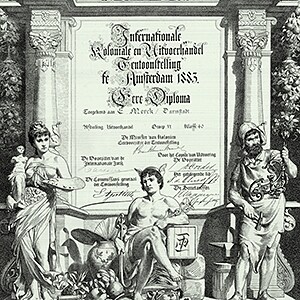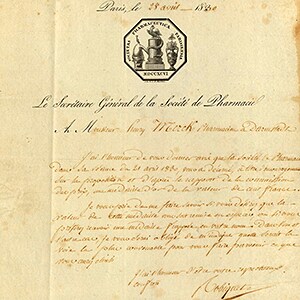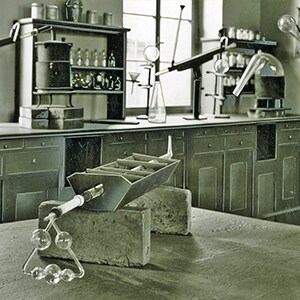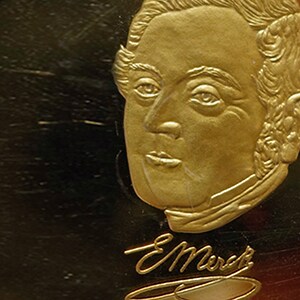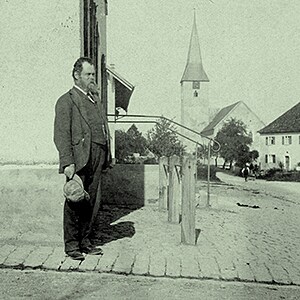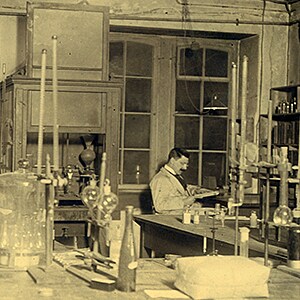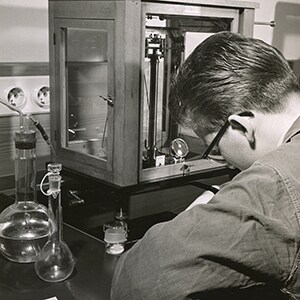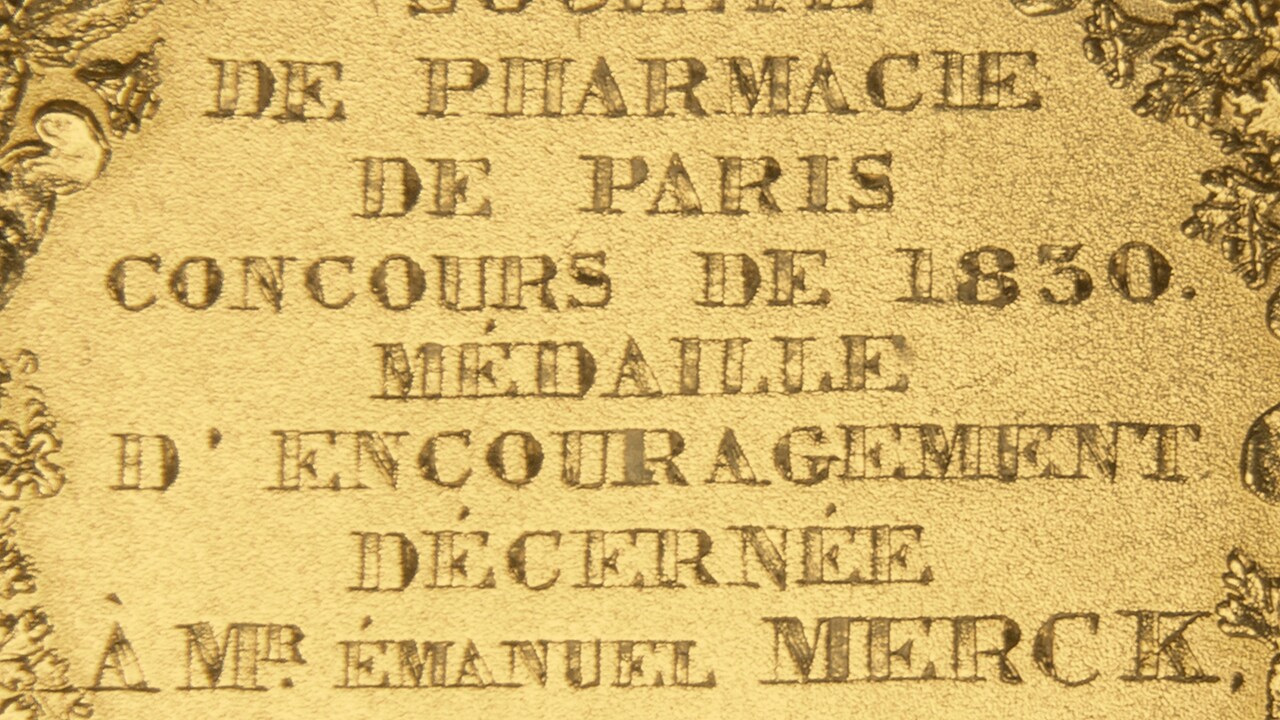
»This question can therefore […] only be resolved by cooperation between chemical analysis experts and manufacturers…«
Joseph König, preface to the book: Die Prüfung der chemischen Reagentien auf Reinheit, 1888
In the chemistry of the first half of the 19th century, many measurement and control criteria are still being developed. In 1830, Emanuel Merck has to experience what the absence of generally recognized standards means. The »Sociétéde Pharmacie« in Paris holds a competition in the search for methods that can be used in forensic medicine to detect the presence of alkaloids with certainty.
Although Emanuel’s work is praised, his results cannot be reproduced. In his publicationon the five-ball apparatus, Justus Liebig sums up the problem: He »found Mr. Merck’s experiments [...] quite correct«. The deviation is allegedly the fault of »the unequal purity of the substances«.
Emanuel Merck himself vouches for the quality of his products through his own elaborations and the application of ever better manufacturing processes and test methods. In 1851, in response to a customer’s complaint about contamination of the morphine he supplied, Emanuel Merck issues a comprehensive product guarantee: »I guarantee you consistent purity of my preparations and will compensate you for any loss arising from an impure preparation.« In 1853, he wins his first international prize at a world exhibition in New York.
The first standard analytical reference work, »Die Prüfung der chemischen Reagentien auf Reinheit« (Testing Chemical Reagents for Purity), is published in 1888. The author is Carl Krauch. After his training as a pharmacist, Krauch studies in Tübingen and Erlangen. He then worked as an assistant to Joseph König, who is considered the father of modern food chemistry. In 1882, Krauch joined the company as a quality control chemist – also for financial reasons, as he writes in retrospect.
In the preface to this book, König calls upon the factories to »introduce uniform designations and make a firm guarantee as to the extent of the purity [of their products]«. In the same year, the company declares that it will market reagents only after they have been tested in accordance with the criteria defined by Krauch.
The »guaranteed pure reagents« labeled »pro analysi« appear for the first time in the price list of December 1888. They subsequently become generally accepted purity standards in the chemical industry.
In accordance with its importance, the publication is repeatedly expanded, updated and translated. When published in 1888, it comprises 60 pages and grows to almost 700 pages in 1939. In 1971, the compay »Standards« become the sequel to his ideas.
In 1988, the »Heinrich Emanuel Merck Award«, sponsored by E. Merck, Darmstadt, Germany, is introduced to honor scientists who have developed Krauch’s ideas further.
In 1830, Emanuel Merck receives a »Médaille d’encouragement« with an accompanying letter from Paris. It testifies recognition from one of the centers of alkaloid research. Quality becomes a commitment and a success, as shown by the certificate from Amsterdam in 1883 as well as advertising from the 1920s.
Justus Liebig confirms the research work conducted by his friend Emanuel Merck in his publication about the five-ball machine. Emanuel Merck’s name is permanently linked to analytical chemistry by a prize first awarded in 1988. Carl Krauch sets up the first biotechnological production unit at the company in the 1890s.
From the procurement of raw materials to packaging: in each area, it is important to ensure quality requirements. This is assured in the control laboratory – until around 1904 still under the roof of the Engel-Apotheke. At the new site, the facilities are continuously adapted to meet the growing requirements, as in 1935 or 1960.

